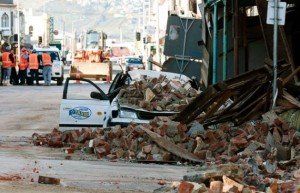The Christchurch February 22 earthquake has awakened New Zealand to the importance of earthquake prepared buildings, but will Australia learn from our experience?
 Jason Ingham, Associate Professor of Structural Engineering at University of Auckland, writes his plea for awareness across the ditch in an article for the Australian science website The Conversation.
Jason Ingham, Associate Professor of Structural Engineering at University of Auckland, writes his plea for awareness across the ditch in an article for the Australian science website The Conversation.
An excerpt (read in full here):
Reinforce your buildings, Australia, or see them crumble
February’s events in Christchurch brought people’s attention to the patently obvious: that old brick buildings collapse in large earthquakes.
There is no shortage of past lessons regarding this fact – only a general complacency to acknowledge the hazard. The reasons for this are obvious: earthquakes are infrequent and unpredictable natural hazards, such that people generally assume that they themselves will never be involved in one.
Furthermore, once they have been involved in a large earthquake, people are likely to assume a repeat will never occur, just as lightening never strikes twice.
To do something about the vulnerability of old brick buildings so that they better withstand earthquakes costs money, and there is always something more urgent that the money could be spent on.
So we ignore the lesson from the Napier earthquake in 1931, which killed 256 people, and the lesson from the Newcastle earthquake in 1989, which killed 13 and injured more than 160.
On both sides of the ditch, we happily go to brunch on Sunday in the funky cafe at the corner of the street with the interesting brick patterns on the wall. We give no thought to how the building might perform in an earthquake or what the old part of town would look like if the walls fell out of every building on Main Street.
In reality, earthquakes don’t kill people – collapsed buildings kill people.